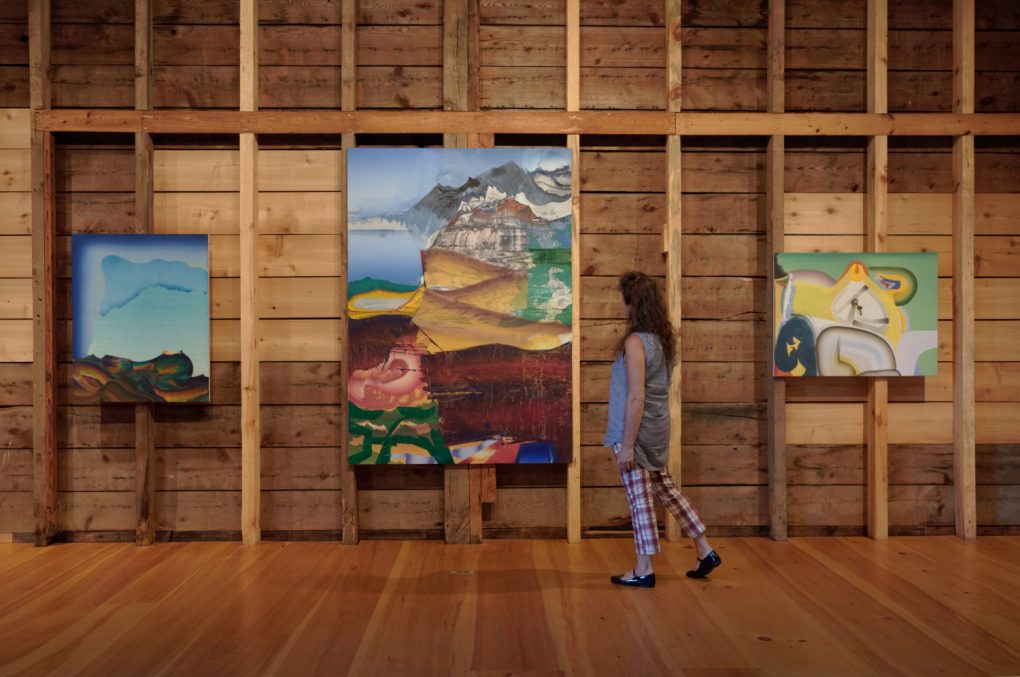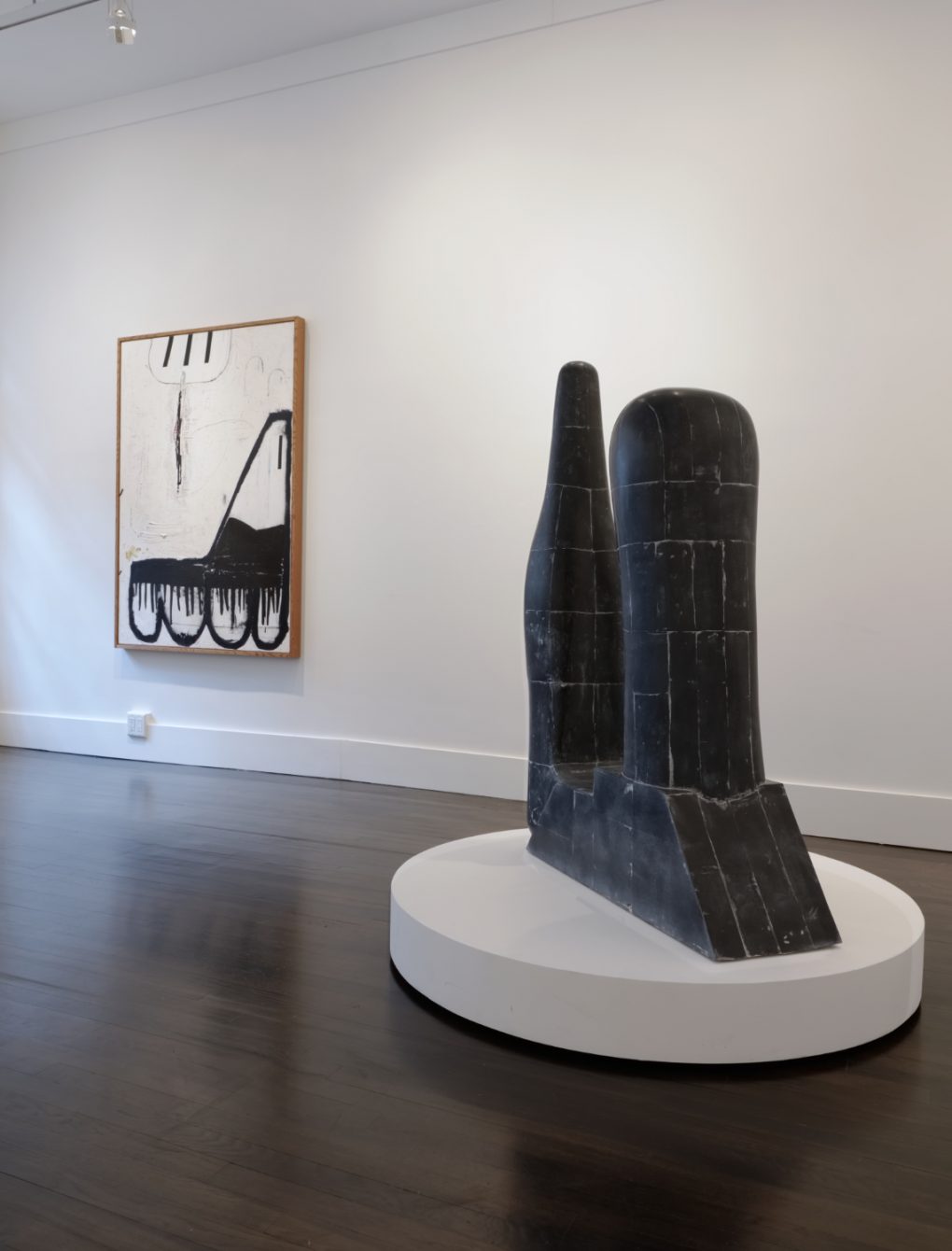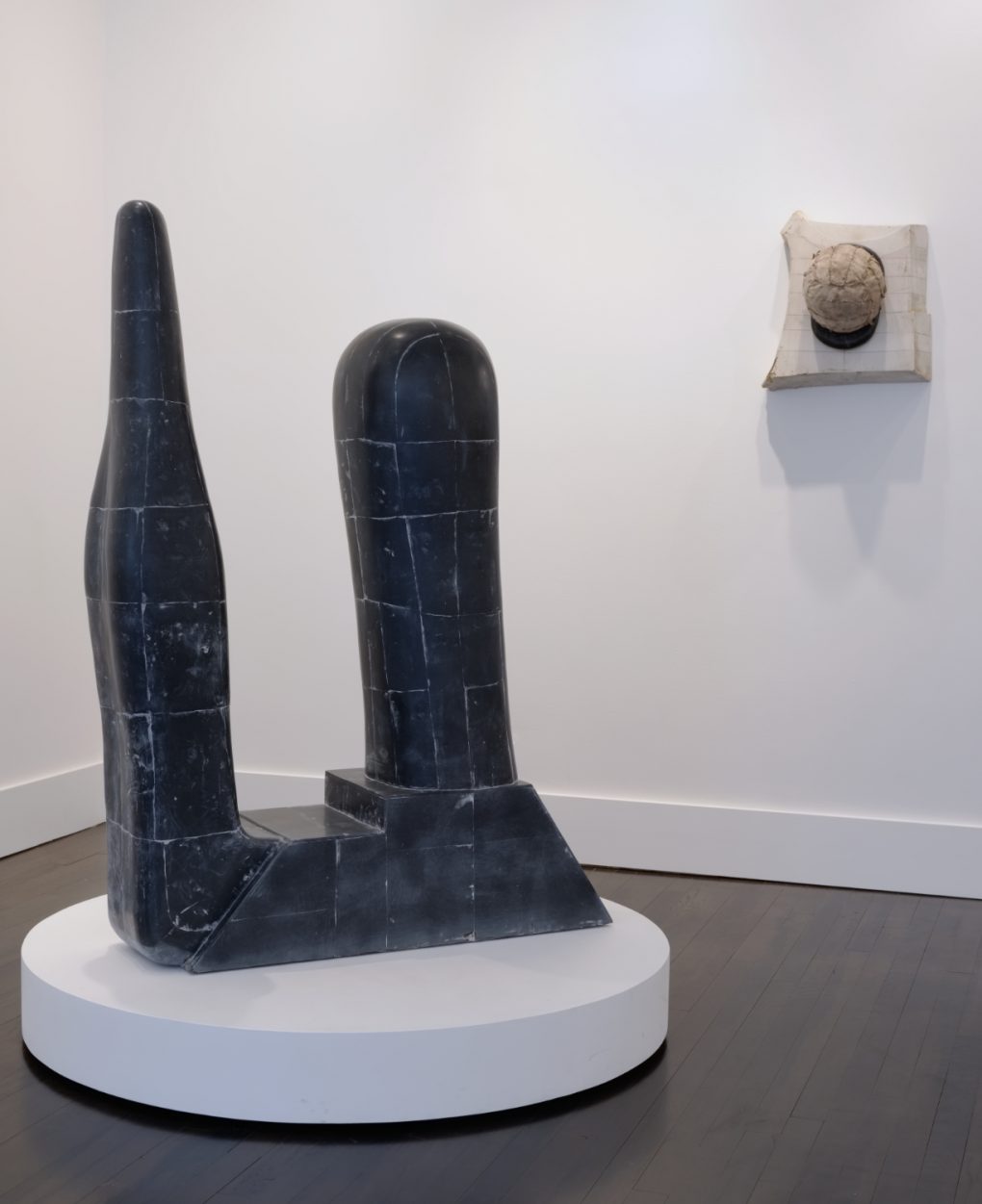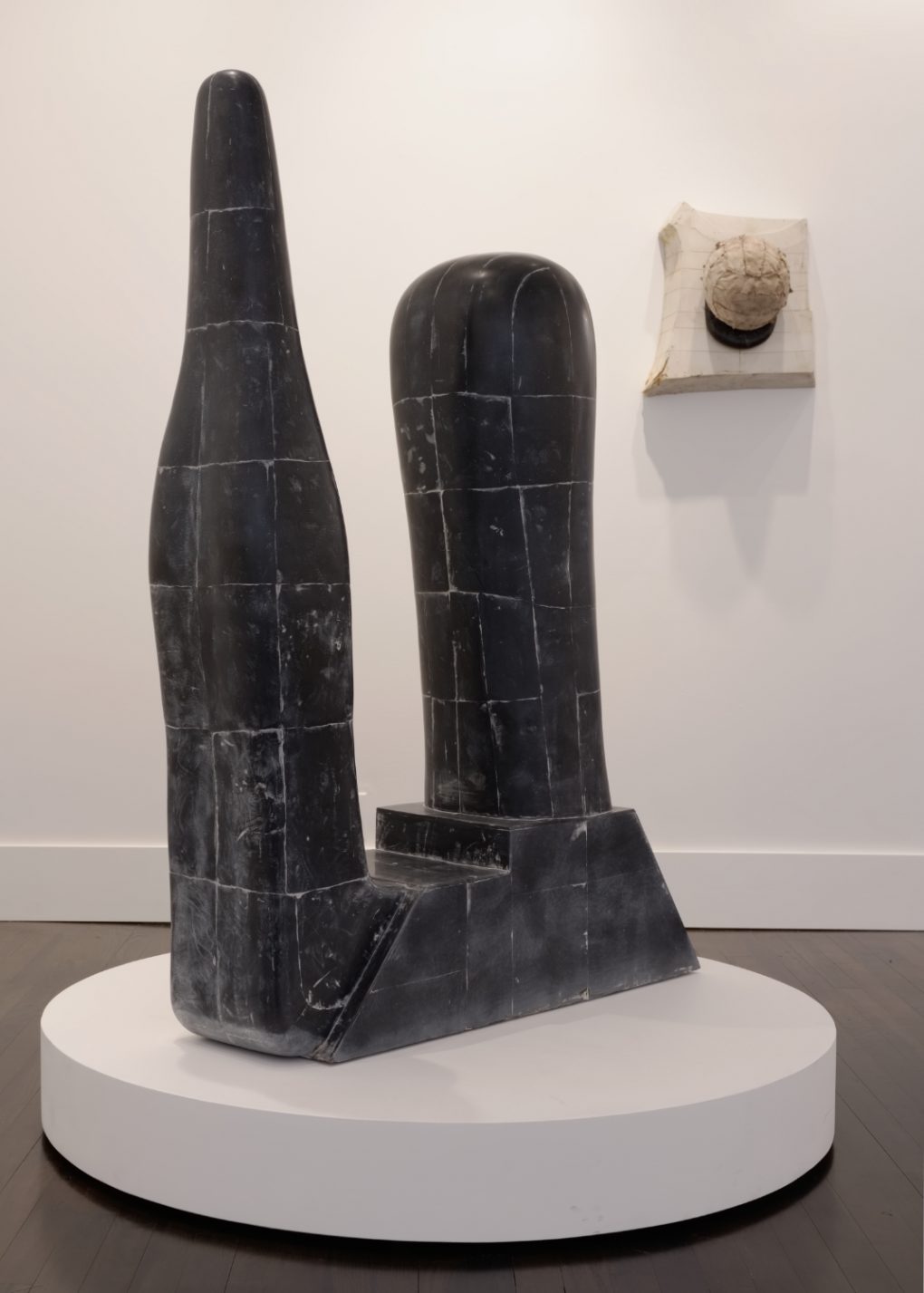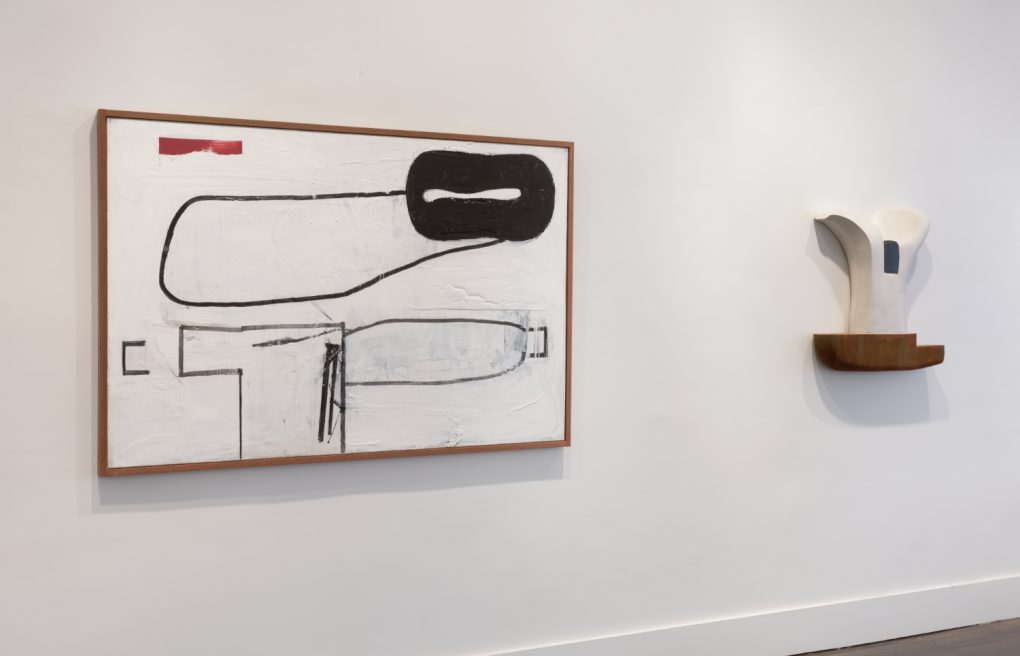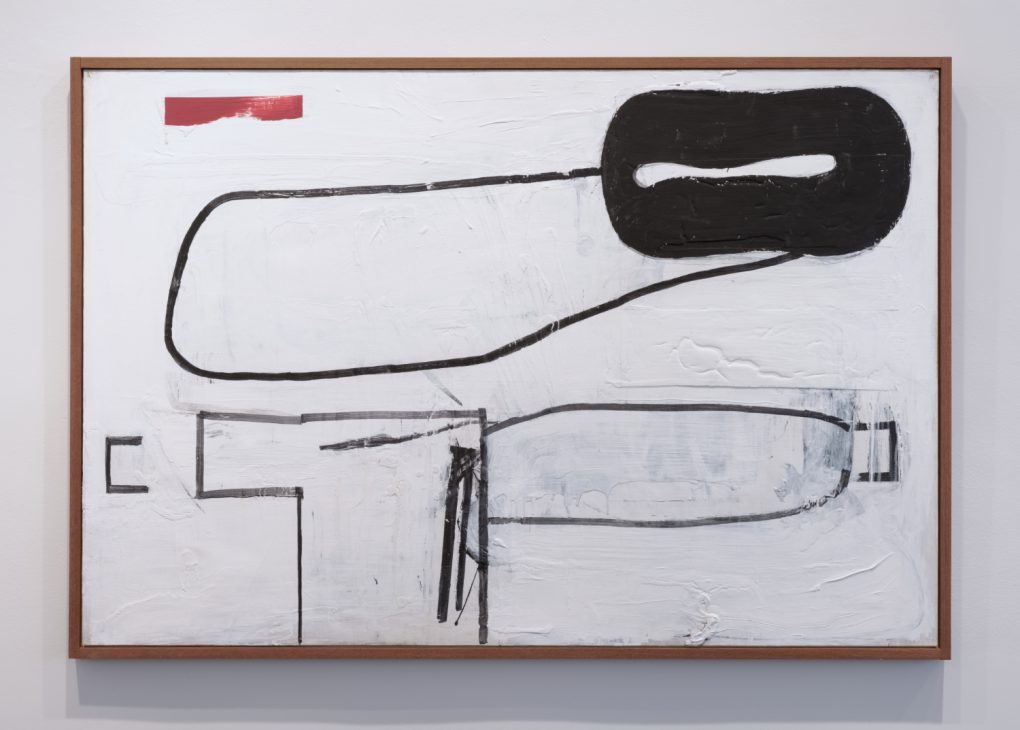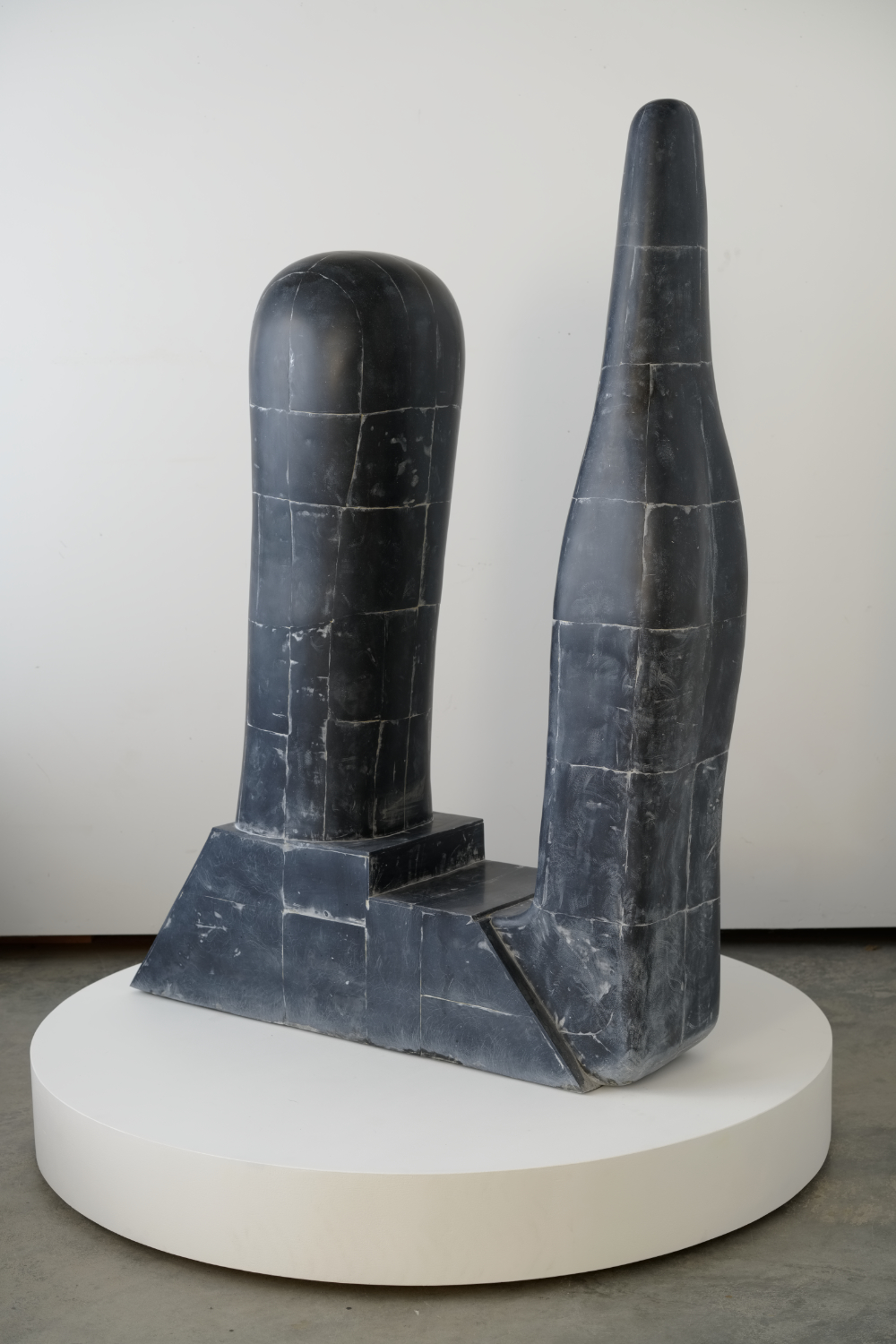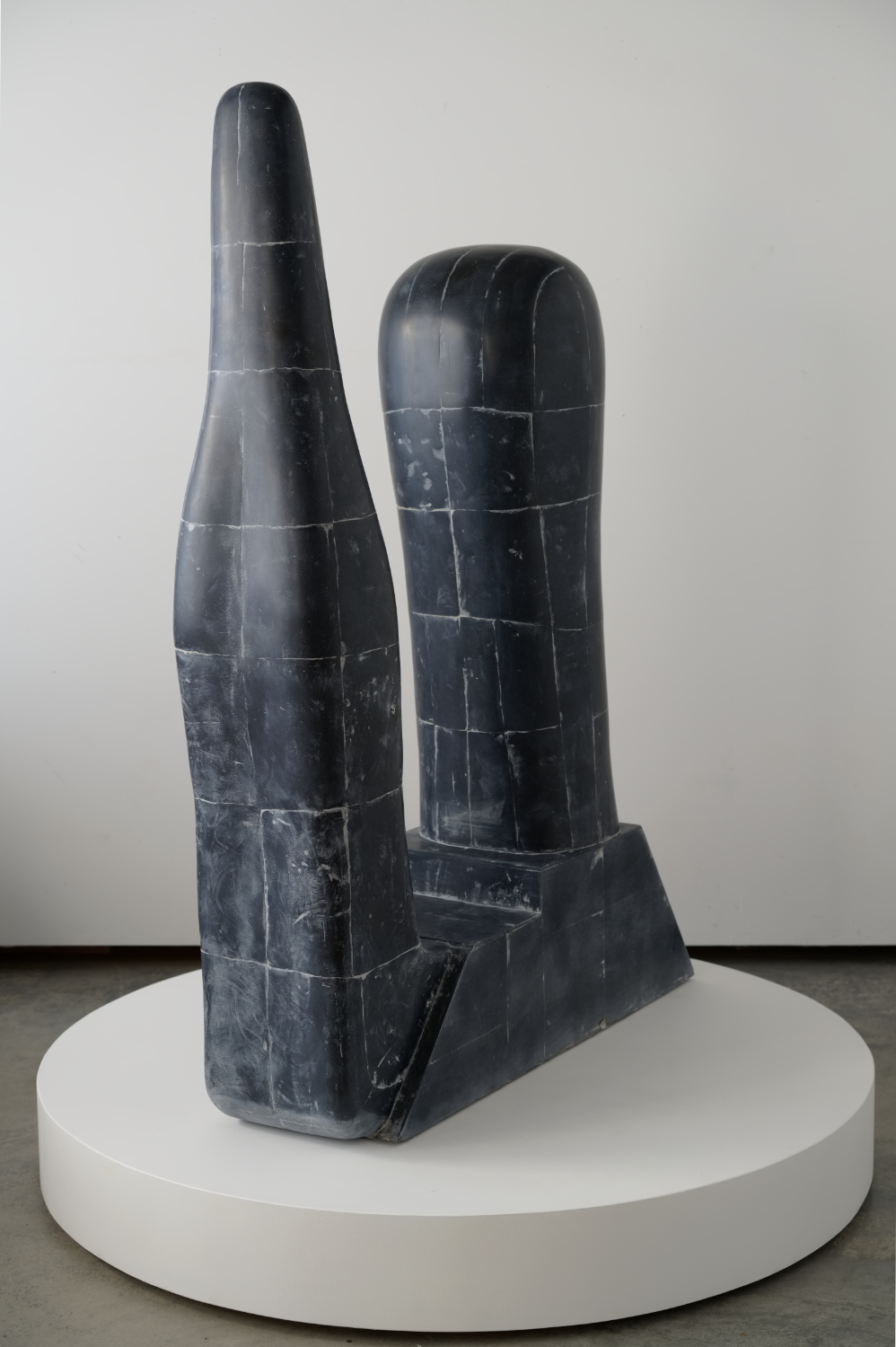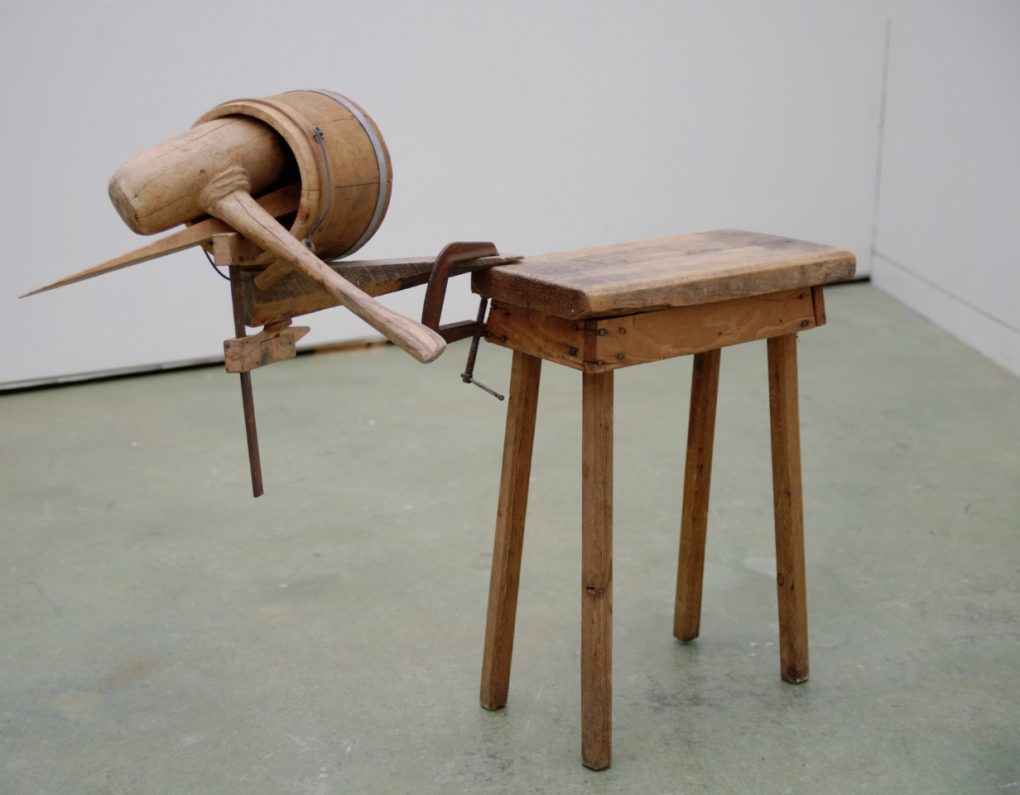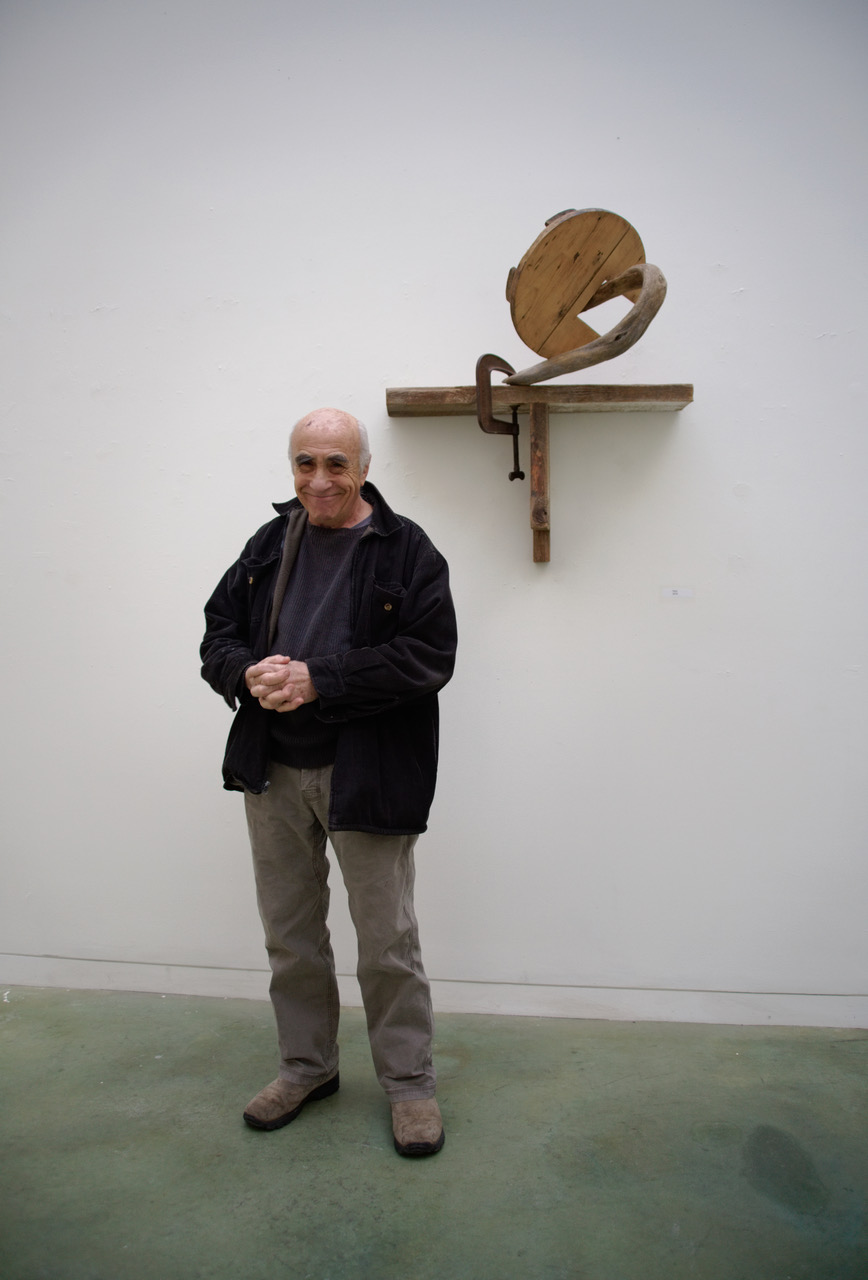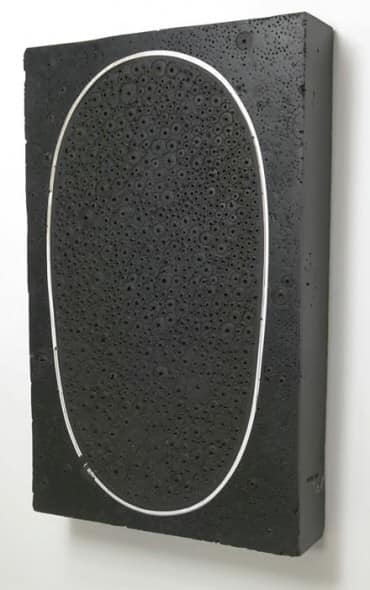-
Conversation with Elliott Green
Here is an interview I have done with artist Elliott Green. Elliott is one of the artists in the show Three Painters at Duck Creek, which I curated for the Arts Center at Duck Creek. I enjoyed our conversation tremendously and I thank Elliott for being a part of the fantastic show.

Paintings by Elliott Green from Three Painters at Duck CreekHiroyuki: What prompted you to pursue visual expression?
Elliott: In college I was majoring in literature, but a girlfriend of mine ran the slide projector for art history lectures, so I sat in on those classes, and in the dark lecture halls I was gratefully transfixed and transported through time and all over the world. It was a beautiful escape, and I started to draw in my notebooks, and finally dropped out of the University of Michigan in my third year to move to New York City to learn how to paint. When I landed there in the summer of 1981, I took a couple of month-long courses at the Art Students League, then painted on my own ever after.
Hiroyuki: So, you felt it was a “beautiful escape” when you saw the images in the art history classes. Were you conscious about what you were escaping from? Did the momentum to quit school and move to NYC have anything to do with it, or were you simply under the spell of what art could do for you?
Elliott: That’s a very good question! I was bored and frustrated: mostly with myself, the Midwest where I grew up, and my waning interest in writing fiction. I felt I was in a holding pen — and I had ambitions to do something good and tangible — to test and prove my Self in the larger world; but I didn’t know how that was going to take shape. I was inexperienced. I was immature and impatient. But it turns out that I did find my life’s work after all — in making paintings.

Dressmaker, 2011, Oil on linen, 43 x 40″Hiroyuki: It sounds like you had something in you that needed to come out. Naturally, I think of the explosive energy, poised serenity, and exquisite dynamism of your current work. The colors, movements and rhythms are just bursting out of the canvases. I’ve read that the current direction emerged after your trip to Rome as well as your move to Athens, New York. What do you think has allowed you to be expressive in this way? It seems that your interests in visual elements themselves has been liberated, as opposed to your former expression through recognizable figures, the narratives and more limited usage of visual elements.
Elliott: Actually, catharsis has been a leitmotif in my work, and that was probably something I gleaned from studying literature and film. Often in my paintings — from out of some placid zone of quiet painting–a loud gestural eruption occurs. It’s dramatic, and it’s something I can do by heightening or lowering my physical — my muscular and emotional energy, like a musician or an actor. Another narrative that occurs a lot is to have a constricted space that blasts open into a vaster one. A remarkable thing happened in Rome: the density and compression of the two-dimensional abstract paintings I had been making for several years expanded outward when that information was transposed into the landscape format, into perspective: that was like an explosion. The additional space gave the previously contained subject matter freedom to move from the distance to the forefront, and it was like an infusion of fresh air. It was liberating. And the shapes, like the round or sharp ones of the mountains, took on characteristics–recognizable personalities–like the figures I had painted years before.

Beach Mountain 2015, Oil on linen, 76 x 54″Hiroyuki: The reference to landscape does work wonderfully to express the vast scale while also putting the element of time in a geological time frame. Combined with rich visual characters weaving narratives, the dramatic expression certainly brings out a strong emotional quality. But then, all that merely presents a challenge of actually constructing a functional whole which you manage very well. How does your painting start? Can you describe your making process? Also, were you always interested in colors? The striking use of colors can be seen as playful and absurd. In a way, it echoes your use of figures in your previous work.
Elliott: I start by brush-sketching on the canvas with a mixture of oil paint and graphite, and sometimes added colors, and I move without conscious intention for meaning, seemingly randomly, wiping away a lot. There is no pressure, because it is impossible to make a mistake at this stage. On one level, it is warming up my muscles, relaxing, emotionally diffusing, and at very least, spreading the tone on the canvas. If I make sweeping gestures that transverse the entire space, that will precede the final composition somehow, and foreshadow a theme. Motifs of shapes occur and through addition and subtraction some sensibility, personality and perspective arrive, and then I do more conscious analysis – editing, adding and tweaking to focus on the most interesting aspects and activities. For the benefit of the whole painting, some beautiful passages have to be sacrificed and painted over. Somehow, given enough time, a coherent vision arrives. I’ve made stop-action films of me making my paintings – and those let a viewer see how many decisions, reversals and revisions are involved, all of them impossible to predict.
I think I always had a sense of which colors got along beautifully with each other. I remember staring at children’s books as a toddler, immersed in them, like I was fascinated by their tonal harmonies. But not long after I began painting as an adult, I was looking for more excitement, and one way is to use colors that are unappealing on their own and to put them in with the naturally beautiful ones: the result is often very interesting. For example, the pink and green used to seem like a viscerally offensive combination to me, maybe because it reminded me of insects or rancid meat. But that is exactly where the meaning resides in color, in its good or bad associations with aspects of the world. A rainbow means connection and vomit means rejection — that’s good content even by itself, and then more dramatic when they conflict, or even better, if they somehow become unlikely friends.

Fungus, 2018, Oil on linen, 16×24″ and Interesting Dirt, 2019, Oil on linen, 40×30″Hiroyuki: I just saw the videos that show the progress at your site. I can relate to the dialogue you create with the dynamics. I know that there are moments of excitement, disappointment, frustration, a sense of achievement and so on. And there is nothing like feeling that everything merges as the process culminates in presenting a cohesive wholeness. I don’t always feel it but sometimes the moment is indeed a catharsis. And it is also fascinating that the complex dynamics often reveal “unlikely friends”, as you say, it strikes us with unknown chemistry in viscerally concrete ways. It allows us to explore and makes us see unknown potentials explode before us. Strange thing isn’t it? Are there any activities that go with your studio practice? I mean, everything ultimately does, but things you are conscious about to keep you going.
Elliott: I realized in Rome, where my eyeballs were literally aching from looking so hard, that new environments absolutely stimulate what I will paint. I think it’s because when shapes and tones fill my short-term memory to capacity, it speeds up my decision-making, and the improvisations flow faster. So, my method is to just look around me with an innocent curiosity. I never deliberately seek out material for painting, nor do I sketch with the intention of inserting some phenomena directly into a painting. I have to be honestly, genuinely compelled by something to study it and enjoy it for itself, and then maybe, sooner or later, some essence of that thing I was paying attention to will emerge effortlessly at just the right time and place in a painting.

Interesting Dirt, 2019, Oil on linen, 40 x 30″Hiroyuki: I’ve heard artists talking about appreciating things around us visually. I always thought it was more about our attitude toward life in a general sense. But that makes sense. We learn and we are conditioned by our environment. Our actions and thoughts are affected by those. I was just talking to Eric Banks and he was also saying that he paints landscape paintings to inform himself about visual structures. And by choosing what to look at and how you look at it, you make a conscious decision (to a certain extent) as to where you sharpen your craft of expressing visually. That’s very interesting. It makes me think that artists should talk to each other more. Do you feel that you belong to an art community?
Elliott: Before a gallery represented my work in New York, I had no artist friends. But after 1989, when I was 29, I met many artists, mostly at first through another painter and sculptor named David Humphrey, who is very popular and active in the art community. He’s what the sociologists call a Super Connector.
Pierogi, the gallery where I show in NYC, is run and owned by a couple, an artist and a poet, so there is a lot of mutual respect, and also camaraderie among the artists who show there. The openings at Pierogi have always been packed with many artists. Joe Amrhein, the co-director, had a show at Postmasters Gallery in Tribeca last year. His paintings are great, but he also thinks of the gallery as a long running conceptual artwork about the moving messages of contemporary artists. There have been many historical shows there — it was the most active gallery in Williamsburg for decades, before they moved to the Lower East Side a few years ago. Its existence has documented the emergence of that neighborhood as a cultural community. Many of the artists that show there are my friends. And then I have made new friends, like you, on Instagram, which has really widened my horizons by introducing me to the work of friends of friends and talented people outside my generation, younger and older.
Hiroyuki: Elliott, thank you for sharing your insights and angles on many topics on art and art communities. Do you have anything to add to our conversation?
Elliott: Not really. Just thank you for this chance to think about my work from a fresh perspective, and for your interest. I think your work is great, and it has been enjoyable to compare notes on the shape of our different quests, and to see how our work has arrived at its present place.

Fungus, 2018, Oil on linen, 16 x 24″Elliott Green (b. 1960 Detroit, Michigan) attended the University of Michigan, where he studied World Literature and Art History. He moved to New York City in 1981 and has been awarded a John Simon Guggenheim Foundation Fellowship, the Jules Guerin Rome Prize at the American Academy in Rome, a Pollock-Krasner Foundation Grant, a Marie Walsh Sharpe Foundation Residency, The Peter S. Reed Foundation Grant, a residency at the BAU Institute, Cassis, France, a MacDowell Colony Residency, and three residencies at Yaddo.
-
Three Painters at Duck Creek
I curated a painting show titled Three Painters at Duck Creek for the Arts Center at Duck Creek. The show went up on August 8th, 2020. It will be on view through August 30th, 2020.
Last year, there was an exhibition of my own paintings at the barn at Duck Creek. It was challenging, but it was also very rewarding. The warmth of wood, the irregular elements of patched walls and the natural elements of the historic site define this attractive venue. I live seven minutes away from there. I care about the place and I wanted to organize a show that people in the community could truly enjoy.
To me, the process of painting involves honesty, dedication and patience. It allows us tremendous freedom, but it also forces us to work with all elements with fairness, keen observation and a broad view to grasp the wholeness. We become one with the momentums, dynamics and mechanisms within the visual structure, which is built by our dialogues with the visual elements. Our paths become the work. The work therefore is authentic in a way, and it can capture a profound something that can resonate with our soul.
The work of the three painters that I selected for the show somehow share the above quality. They can be complex but they also convey solid cohesiveness. These three artists are versed with their own visual languages and they all speak to us in their own ways: but as they harmonize colors, shapes, lines, and layers, they reveal profoundness that goes beyond the framework that binds us as “civilized” beings, yet often as alienated beings. Their paintings have the power to move us unconditionally if we care to listen.
I thank Duck Creek for giving me an opportunity to organize this show. It has been rewarding on many grounds.
In order to introduce the artists to the Duck Creek audience, I interviewed the three painters. We talked about how they get started, their processes, their philosophy on art, and more.
Conversation with Elliott Green
Conversation with Sean Sullivan
At the Duck Creek barn, the interviews are available in a booklet format.
Read the booklet in a pdf format. You can also print your own booklet.
Elliott Green (b. 1960 Detroit, Michigan – eg@elliottgreen.com). He attended the University of Michigan, where he studied World literature and Art history. He moved to New York City in 1981 and has been awarded a John Simon Guggenheim Foundation Fellowship, the Jules Guerin Rome Prize at the American Academy in Rome, a Pollock-Krasner Foundation Grant, a Marie Walsh Sharpe Foundation Residency, a The Peter S. Reed Foundation Grant, a residency at the BAU Institute, Cassis, France, a MacDowell Colony Residency, and three residencies at Yaddo.
Eric Banks (b. 1954 Brooklyn, NY – ericbanks54@gmail.com) Brooklyn-native, Banks lives and works in Rhinebeck, NY. In 1977, he obtained his B.A. from Queens College of the City University of New York, NY. After receiving his M.F.A. from Maryland Institute College of Art, Hoffberger School of Painting in 1981, Banks was awarded the Pollock-Krasner Foundation Grant, Edward Albee Foundation Grant, and Walters Fellowship. Banks has exhibited nationally; most-recently, his work has been on view at NYC galleries, such as Amos Eno Gallery and Sideshow Gallery.
Sean Sullivan (b. 1975 Bronx, NY – paradepimlicopearl@gmail.com) lives and works in the Hudson Valley, NY. He received the NYSCA/NYFA Artist Fellow in Printmaking/Drawing/Book Arts Grant in 2017. He has participated in group exhibitions at the Samuel Dorsky Museum of Art at SUNY New Paltz, NY; the Markus Luttgen Gallery, Cologne, Germany; and the Museum for Drawing, Huningen, Belgium.
Here are images from the show.
-
Images from Drive By Art
Here are some images from Drive By Art.

#89, painted resin and wood, 48” x 20 ½” x 27”, 2020
#89, painted resin and wood, 48” x 20 ½” x 27”, 2020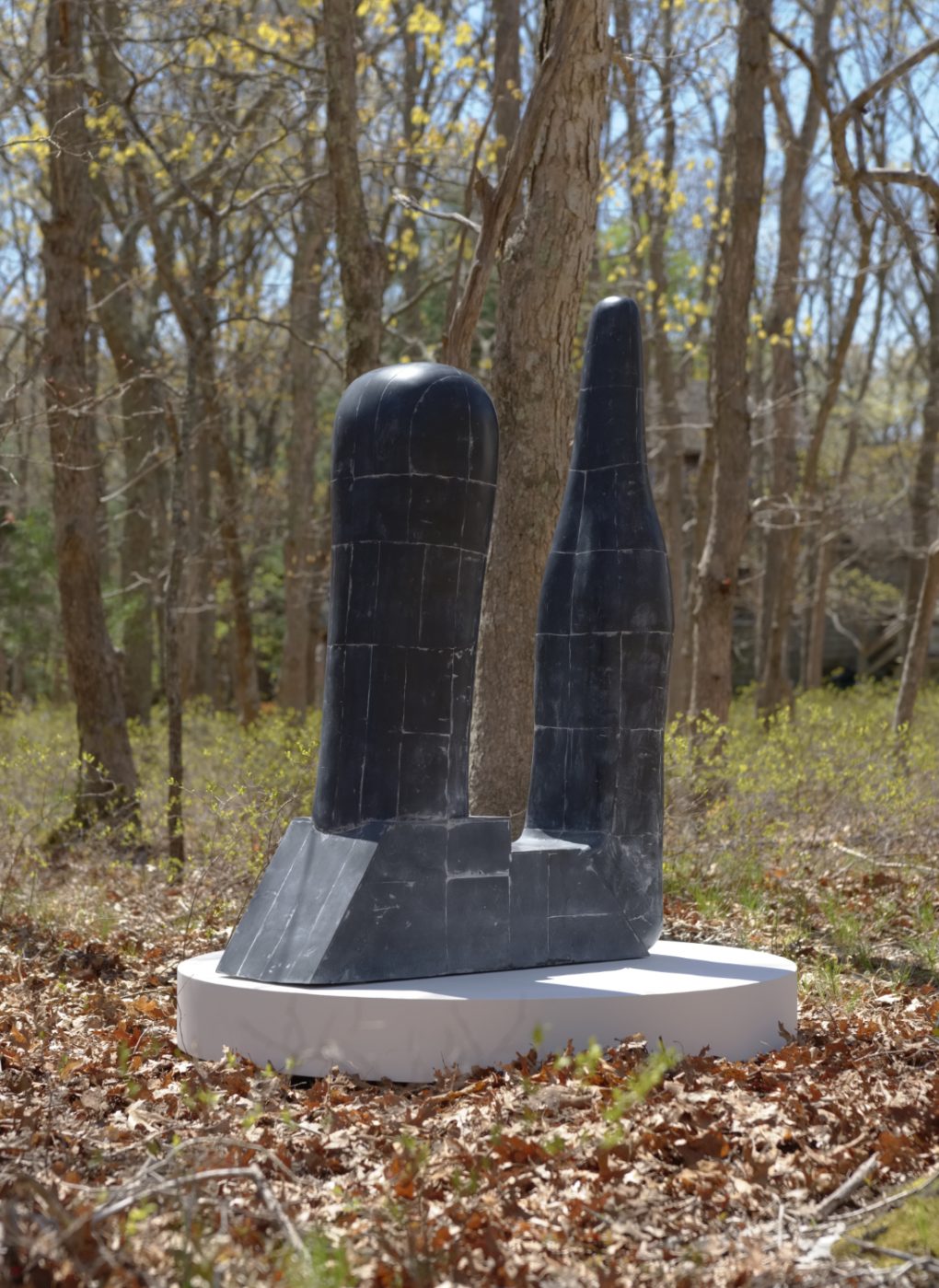
#87, 54” x 40” x 11 3/4”, pigmented resin, 2019
#87, 54” x 40” x 11 3/4”, pigmented resin, 2019
#87, 54” x 40” x 11 3/4”, pigmented resin, 2019
#72, painted resin, 28″ x 53″ x 39″, 2011-13
#72, painted resin, 28″ x 53″ x 39″, 2011-13
#72, painted resin, 28″ x 53″ x 39″, 2011-13
#88, painted resin, 47” x 29” x 41”, 2016-20
#88, painted resin, 47” x 29” x 41”, 2016-20
#88, painted resin, 47” x 29” x 41”, 2016-20More info for Drive by Art, an art event organized by Warren Neidich
My recent essay was made available during the event:
Lockdown Therapy for Capitalism
by Hiroyuki Hamada / April 28th, 2020 -
Drive By Art
In Art, Artist, Capitalism, creative process, Culture, Exhibition, Installation, new work, News, Sculpture onI’ve been asked to participate in an outdoor exhibition titled Drive By Art organized by Warren Neidich. It takes place on the eastern end of Long Island where I’m located. Artists come up with unorthodox ways to show art, and hopefully the event generates constructive discussions on the extraordinary situation we are in. This gives me an opportunity to try placing three of my sculptures outside, which I haven’t done before. Yesterday, my wife and I looked around the woods by our house and discussed how we go about it. We went ahead and placed one of the pieces at a spot my wife noticed. It was eye-opening to see the piece liberate itself at the spot. What a way to interact with nature. Of course, this is hardly new—countless artists prefer to show their work outside—but it’s better late than never. Oh well. We plan to place one right by the road,and we haven’t decided about the last one yet. Pretty exciting. The event takes place on May 9th and 10th, Noon to 5pm. Around 50 artists will participate. I will also make my recent essay available hoping that it will generate some discussions among us.
Please go to the website for more info:
-
Images from Bookstein Projects show
Here are some images from the Bookstein Projects show. The show is up till February 15, 2020.
Bookstein Projects60 East 66th Street, 3rd Floor, New York, NY 10065Tel (212) 750-0949info@booksteinprojects.com................. -
A New Piece, #87
Here are images of a new piece, #87. After going through many stages for two 1/2 years, it finally presents itself with a cogent presence of its own. The piece will be in a solo show opening on January 9th, 2020 at Bookstein Projects in NYC. The reception is on January 9th, 6-8pm.
#87, 54” x 40” x 11 3/4”, pigmented resin, 2019
-
Images from Paul Bowen’s Wood Light at The Putney School
I was fortunate to catch the last day of Paul Bowen’s exquisite, yet bold and expansive, wood sculpture show last week. I’ve known Paul since 1995. I was a fellow at The Fine Arts Work Center, where Paul served as visual coordinator. I remember being immediately drawn to his sculptures. He is a generation or two older than I am. As both of us grew up in foreign countries and became sculptors after working with paintings, I feel an affinity to his path as an artist. He generously accepts nature, history and the physicality of found materials in seeing through an essence that conveys what it is to live. The human quality he assembles through his practice shines with the dignity and gracefulness of a survivor. When he came into the building to take down the show, he saw me and broke into a big smile. I was as happy to see him as seeing his fantastic show. We confirmed the passage of time in how we both aged. We laughed together. It always warms my heart to feel connected to someone through art.
-
The Utility Banquet at David Weeks Studio
I used to paint with electric drills. I didn’t actually apply paint with drills, but I used various drill bits to make patterns and marks on the work surfaces. Initially I was switching the bits on a single drill, but soon I started to use two drills, three drills and I ended up having a dozen of them on my work table. Eventually, I made a cart with drill holders and a vacuum. The set-up allowed me to be quite intuitive in handling the tools.
The cart—complete with 12 electric drills, vacuum, dozens of drill bit (many are modified), and home made tar paint—is on view at an exhibition titled Utility Banquet, curated by Rodger Stevens and David Weeks at David Weeks Studio at 38 Walker Street, New York City.
You will see custom made art making tools by artists. The show is up until August 23, 2019.Here are some of the pieces worked on with the drill cart.
-
HERE + NOW at Pablo’s Birthday
One of my pieces is in a group show at Pablo’s Birthday, NYC. Please read what the show is all about below.
#53, 2005-08, ENAMEL, OIL, PLASTER, TAR AND WAX, 96 DIAMETER X 37 CM, 38 DIAMETER X 14.5 IN
From Pablo’s Birthday and OFFICE IMPART:
“Press release
HERE + NOW
Exhibition dates: June 26th – July 3rd, 2019
Press preview: Wednesday, June 26th, 5-7pm
Opening reception: Thursday, June 27th, 6-9pm
Pablo’s Birthday and OFFICE IMPART are pleased to present “HERE+NOW”, a 7-day exhibition project which aims to raise awareness about how today’s digital age is changing the traditional art gallery model with the increase of online platforms or other examples of digital presence within the arts.
Following a conviction in the necessity to create new collaborative models, a selection of the most distinguished online art platforms currently operating in the market have been invited to showcase their artists at Pablo’s Birthday gallery space.
Participating platforms: Daily Collector, Isthisit?, This Ain’t Art School, ARTPIQ, hiato projects, AXS Art, Freud Monk Gallery will present compelling works as well as a selection of events which will revolve around this topic, “the new digital era”. We are pleased to announce ARTLAND, Daily Plinth and New Art Academy as our media partners. ARTLAND will create and provide a virtual 3D tour of the exhibition, Daily Plinth will showcase a selection of video vignettes from the project, and New Art Academy will include the digital art exhibited in their newborn marketplace for digital art.
Full list of participant platforms and artists includes: ISTHISIT?, Stine Deja (London, UK) and Joshua Citarella (New York, US); Daily Collector, Jenny Brosinski (Berlin, Germany) and Jonathan Todryk (Dallas, US); ARTPIQ, Sooyoung Chung (Seoul, South Korea) and Ant Hamlyn (Northampton, UK); hiato projects, Paul Weiner (Denver, US) and Irati Inoriza (Balmaseda, Spain), THIS AIN´T ART SCHOOL, Anna Ehrenstein (Tirana, Berlin) and Tara Wray (Kansas, US); AXSART, Tahnee Lonsdale (West Sussex, UK) and Lisette van Hoogenhuyze (The Hague, Netherlands); Freud Monk Gallery, Johan Deckmann (Copenhagen, Denmark) and Hiroyuki Hamada (New York, US); OFFICE IMPART, Hannah Sophie Dunkelberg (Berlin, Germany) and Tristan Schulze (Leipzig, Germany); and PABLO’S BIRTHDAY with Carla Gannis (Oxford, US) and Liz Naiden (New York, US).
Recently new innovative models have arisen that look on how to mediate art today. It is a reaction to the changing society due to new technologies, more possibilities, and a broader visual art market. The art scene opens up and is trying to reach a wider audience. The next generation is eager to try out new, more contemporary solutions that are fun, in demand for different formats and other means to present art.
We are interested in the diversity that new mediums present for showing art, through online galleries, pop-ups, social media based platforms exposing and gathering artists, and young emerging galleries that are vivid, hybrid and engage in this new online-based trend.
How do these different models work, what are their aims, what drives them? This is what we want to ask. How do these new models change and adapt to the art world? What happens with the reception of art? How and where to reach an audience in the digital era?
We believe in collaboration and want to group these new ways and create a vibrant exchange by opening a space for it. For one week a group show will develop with a range of diverse players and will be completed by a dynamic program of discussions, performance, and thematization of these changes in the art world.”
You can see images of the pieces in the show at Pablo’s Birthday website.

